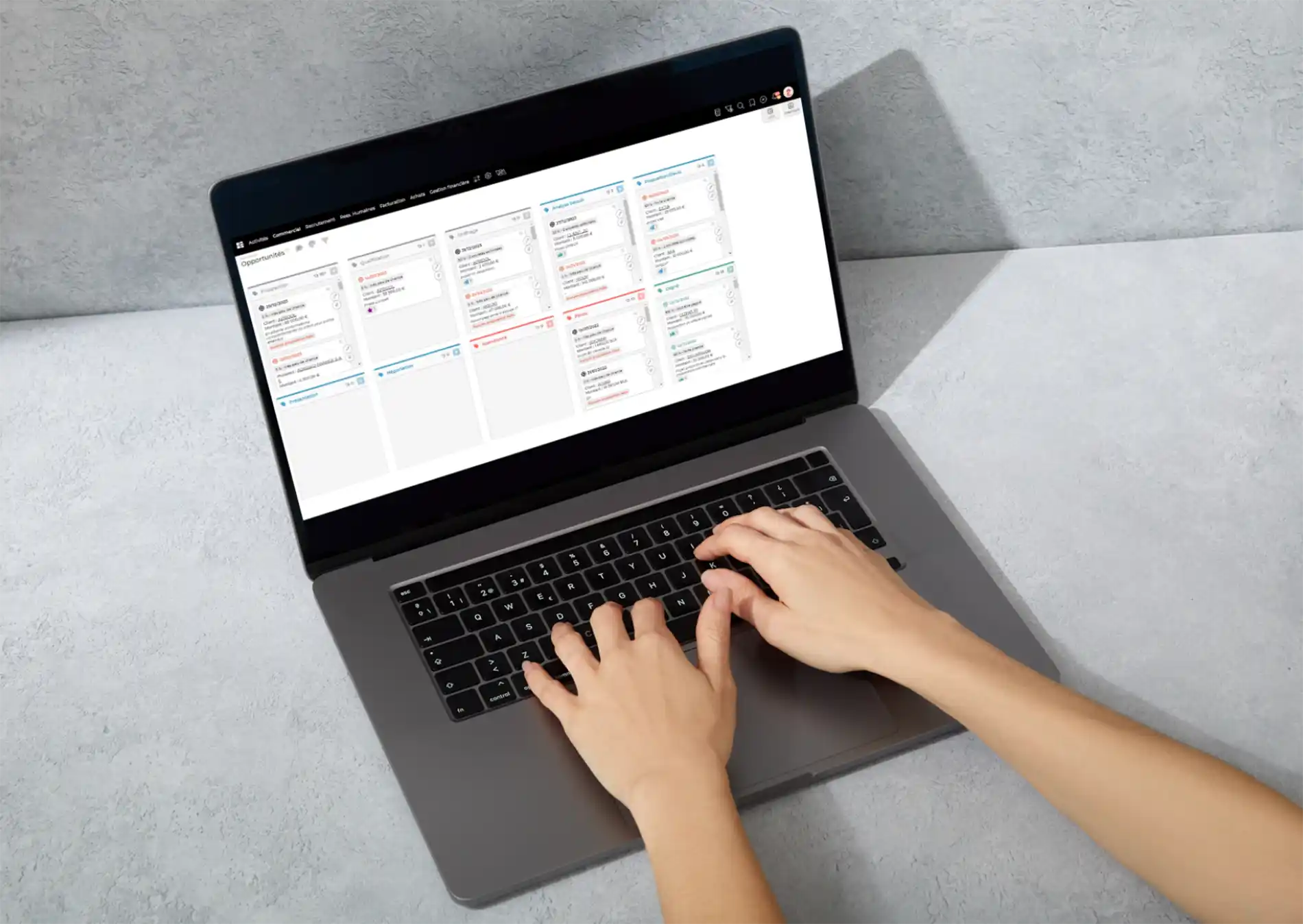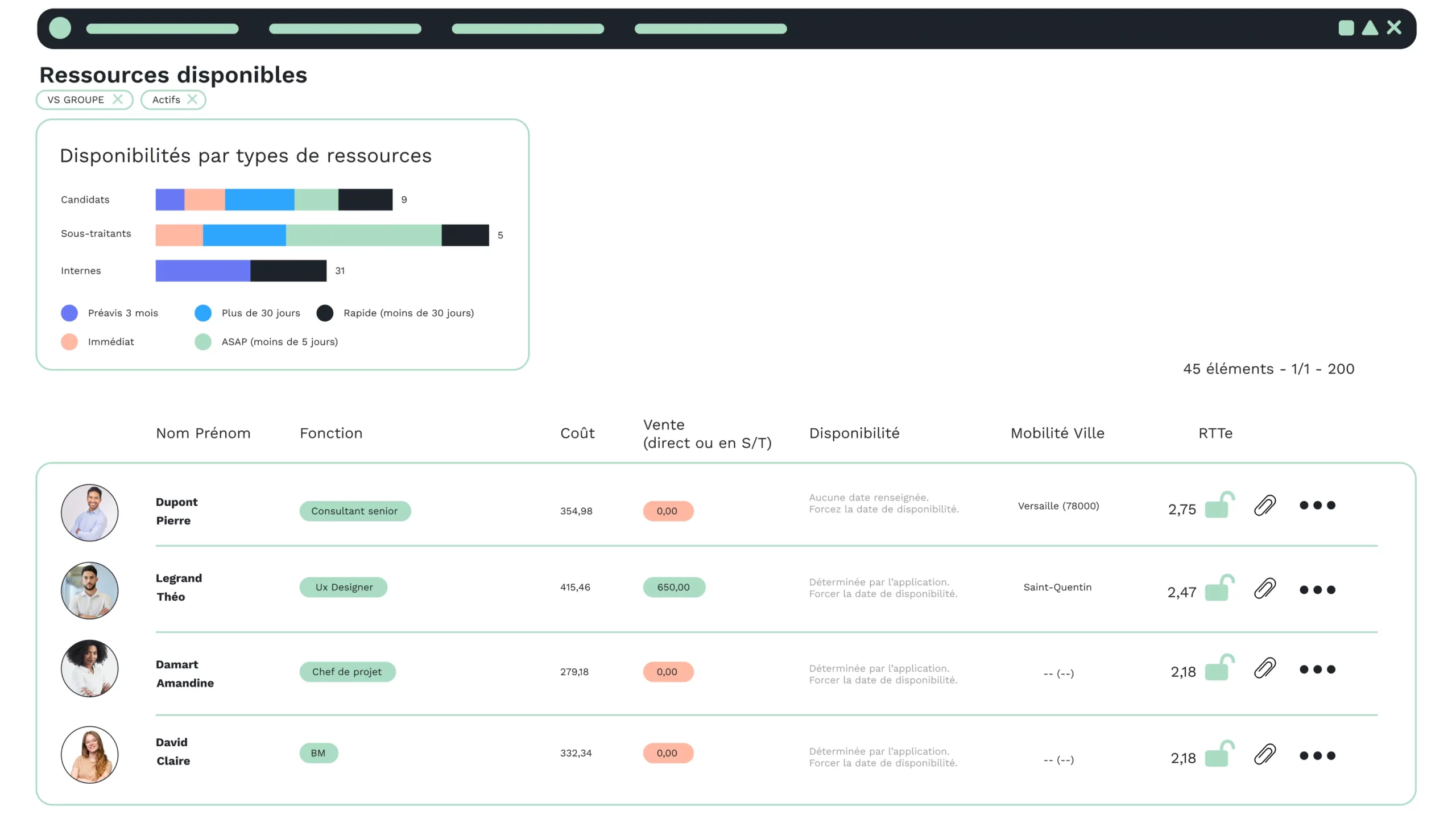Sales prospecting has become essential for any company wishing to expand.
A company can use prospecting to acquire new prospects, build customer loyalty or find new suppliers.
But how can CRM help you grow your business?
To understand how CRM software can help you manage customer relations, you first need to understand the prospecting process.
That’s what we’ll try to do in this article.
What is a CRM?
A CRM (Customer Relationship Management) is an IT solution that generally supports sales teams throughout the sales prospecting and sales cycle.
The CRM solution brings together a range of functions to facilitate the management of the relationship between sales reps and their prospects/customers.
There are several names for CRM: customer relationship management software, CRM software (Customer Relationship Management).
The sales prospecting process
Commercial prospecting / Definition
Sales prospecting defines the process by which a company seeks to acquire new customers, suppliers or build customer loyalty.
The sales prospecting process
Prospecting requires a strategy. You need to identify your objectives, your future buyers, your future suppliers and the customers you want to retain.
You then need to analyze their behavior, know where to find them and establish a strategy before contacting them.
The prospecting process can be broken down as follows:
1/ Identify your target
You need to draw up a profile of your potential customers, suppliers or customers you want to retain, whatever your target (B2B or B2C). At this stage, you need to answer the question “Who is the target audience for your product or service? This involves creating personas.
For example, for prospects
- How do your future buyers behave?
- Where are they located geographically? digitally?
- Do they use an alternative solution?
- What are their problems?
- Etc
For suppliers, for example
- What solutions do they propose?
- What are their rates?
- Are they reliable?
- Etc
For example, for customers
- What are their consumption habits?
- What product/service do they use?
- What complementary products or services might interest them?
2/ Building a qualified database
You need to create a data file containing all the information you deem relevant to your business, from your potential buyers, suppliers and customers.
3/ Determine your contact medium
There are several ways to prospect. You can use telephone calls, e-mail, physical contact (via events, for example), social networks, etc.
Depending on your prospect’s profile, you need to determine which channel is the most relevant and the message you want to convey.
4 / Draw up an action plan
What message will you send? What medium will you use (sales brochure, flyer, etc.)? What’s the deadline? When will you send out the reminders? Etc.
5/ Making contact
It’s time to take action and implement your prospecting strategy.
An analysis of the prospecting process highlights several elements:
- To develop its business, a company needs a qualified database for effective prospecting.
- It needs to be able to segment its file according to various criteria it deems relevant: purchasing behavior, company size, workstation, etc.
- It needs to be able to identify opportunities to establish a commercial relationship with its target (birthday, website visit, etc.).
- Quickly identify the history of exchanges (sales documents sent, telephone calls made, etc.).
- Offer personalized service to customers.
- Measure the effectiveness of your prospecting quickly, and adjust your strategy if necessary.
Office solutions such as spreadsheets can quickly reach their limits in customer relationship management.
If you’d like to go further on the subject: Excel’s limits in managing your business
This is where customer relationship management software comes in handy.
It comes into play at every stage of the process, supporting the salesperson in his or her prospecting and automating certain tasks to save time.
8 must-have CRM features for service companies and consulting firms
1. Contact management
This feature enables you to store information on your company’s prospects, customers and suppliers.
This makes it easier to segment the database, update it and, in short, organize your contacts.
2. Sales alerts
Business alerts make it easier to complete daily tasks. It informs you of missing documents, signatures to be made, a prospect or customer to call back, etc.
It also improves the quality of customer relations.
3. Trading history
Exchange histories make it easier to manage and monitor business relationships. This allows you to keep an eye on what’s been done: signatures, missing documents, e-mails sent, and so on.
What’s more, the sales person can make the best offer at the right time.
4. Dashboards
The dashboard compiles important information linked to the salesperson’s activity. This can be key figures, appointments to be made, sales achieved, etc.
This feature allows you to organize your daily tasks and, above all, get a quick overview of your business.
5. Reporting and graphics
This feature makes it easy to track sales activity: sales pipe, new contracts acquired, proposals won, etc.
It also enables strategic decisions to be made based on the conclusions drawn from the graphs and reports.
6. Opportunity management
This feature gives you access to strategic data, such as quotations sent and files in progress, so that you can put in place a plan of action, such as a reminder or a sales proposal.
7. Accessible on the move
Sales people are increasingly mobile, so having a solution that can be accessed from anywhere is crucial.
CRM tools in SaaS mode are very practical, as they provide mobile access to the company’s information system.
In this way, sales staff always have access to company data: customer files, a consultant’s CV, and so on.
Combined with a mobile application, this makes CRM much easier to use.
8. Document management
Document management saves time when producing documents (quotations, sales proposals, etc.) thanks to predefined templates. In addition, a centralized document database facilitates access to reference sales documents (company presentation, sales offers, etc.).
To conclude on how CRM can help you with your sales prospecting
Sales prospecting is a time-consuming and tedious process, especially when the company has growth ambitions.
This is an important step in the development of the business. That’s why using a CRM to manage customer relations can help sales forces:
- This makes it possible to automate certain tasks and save time.
- Contact management is centralized, enabling better target segmentation for more targeted prospecting campaigns.
- A reporting system is available to monitor activity.
- Etc
In short, CRM is present at every stage of the prospecting process to support you in developing your sales.
Read also







